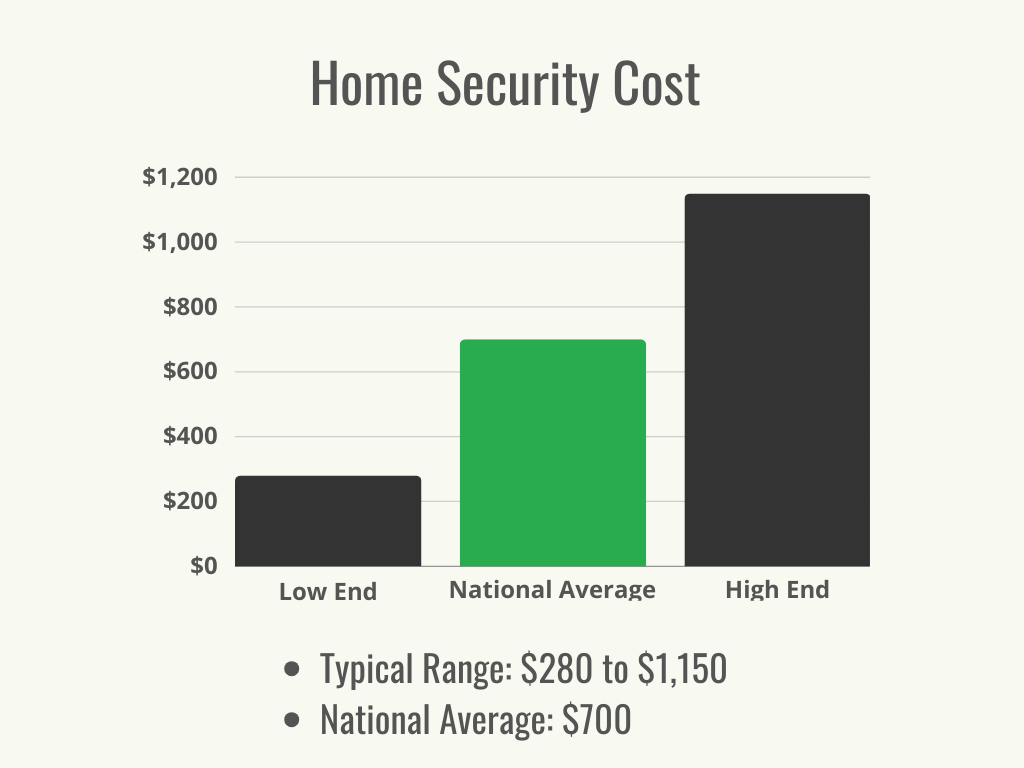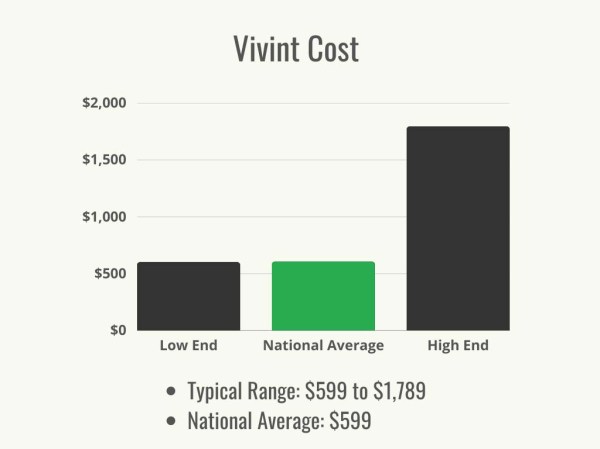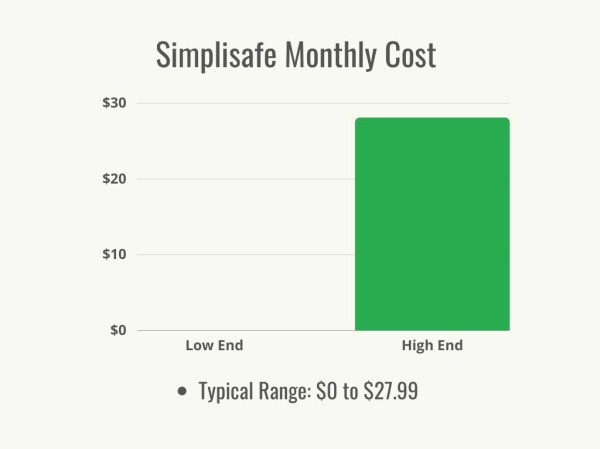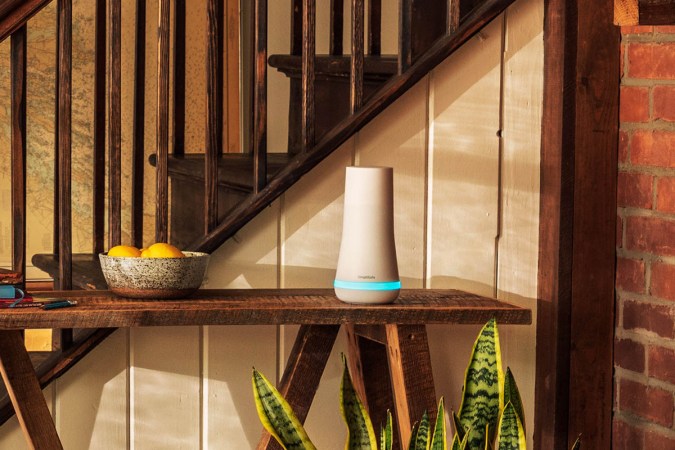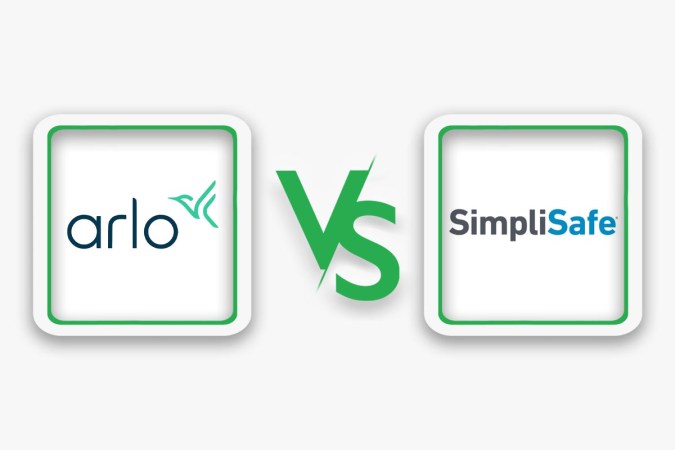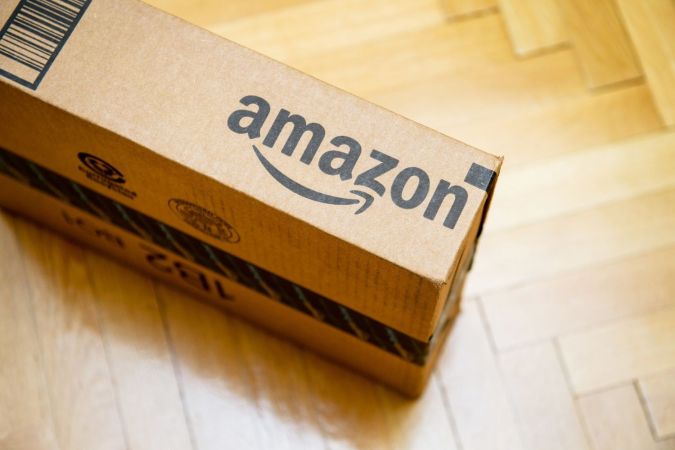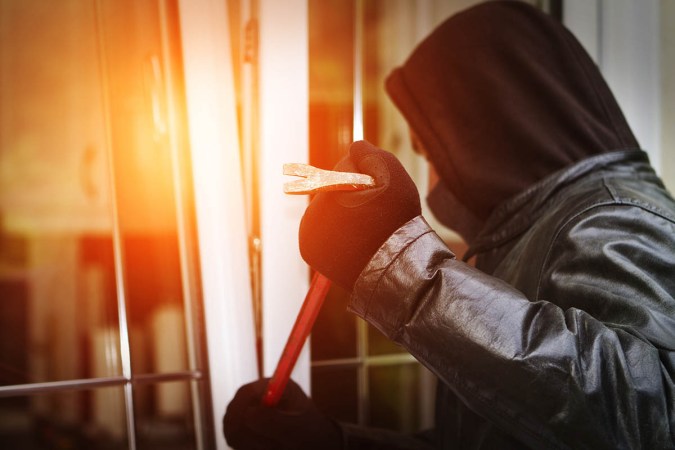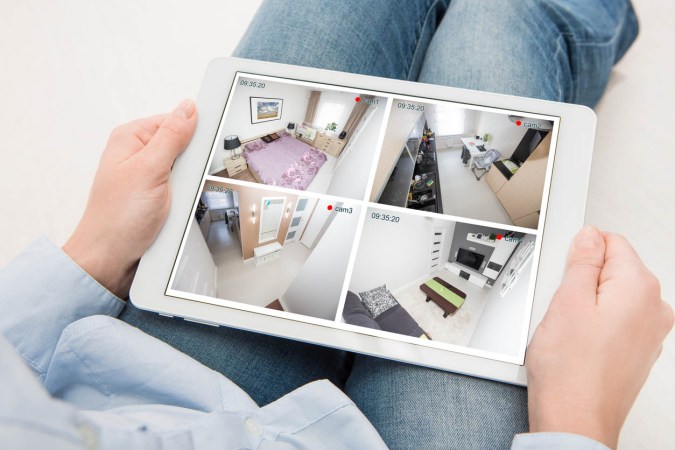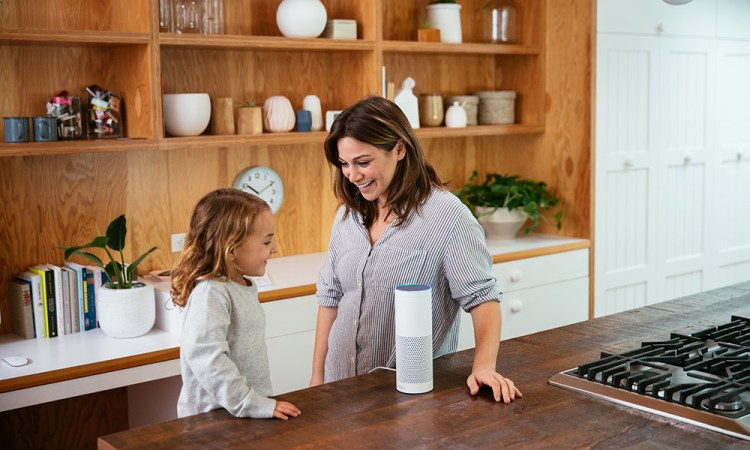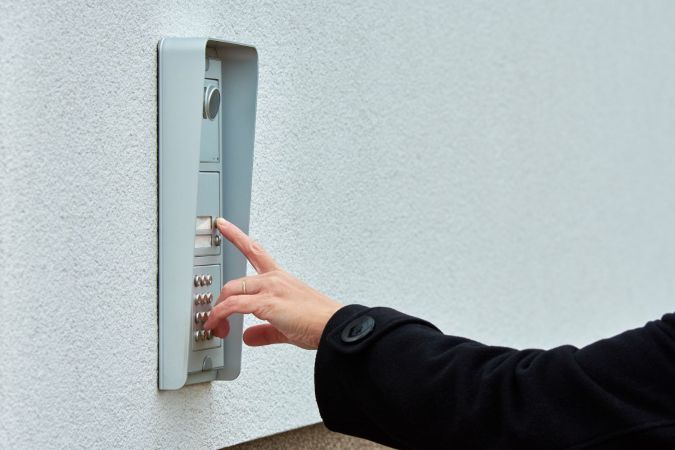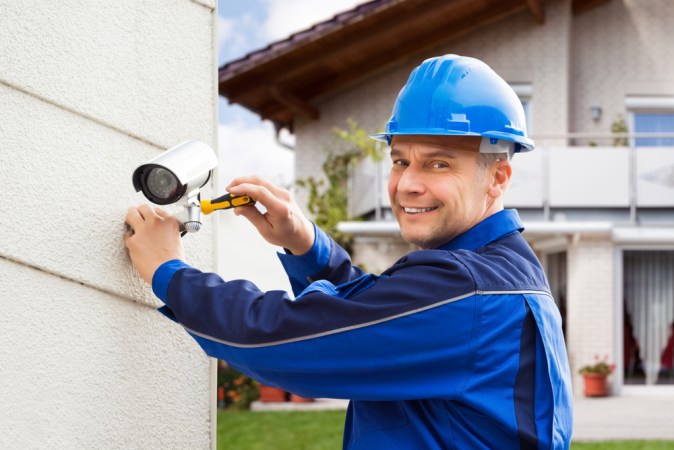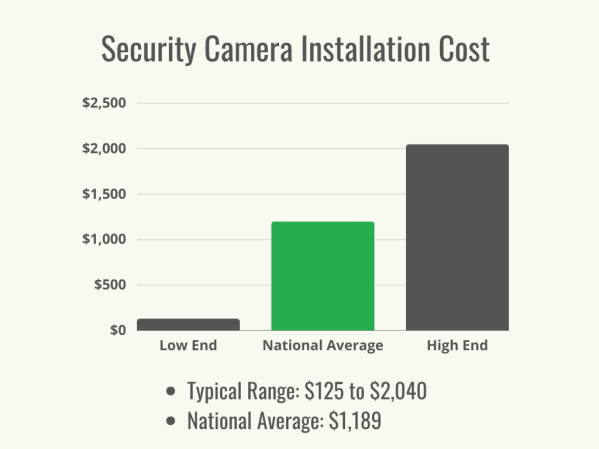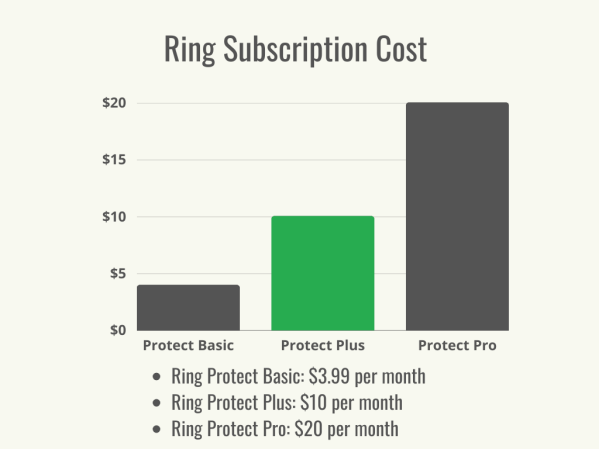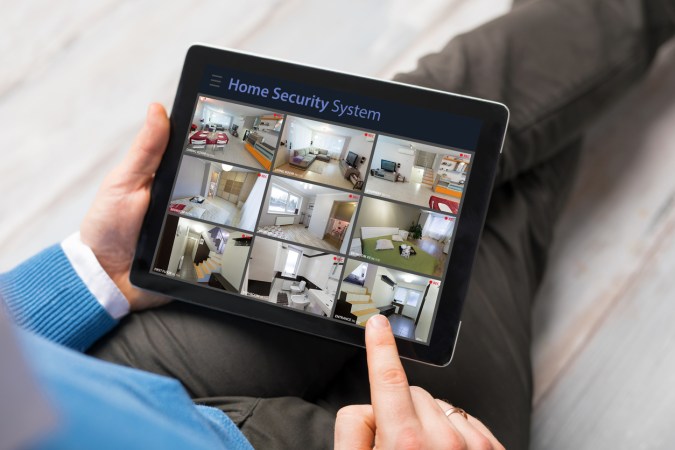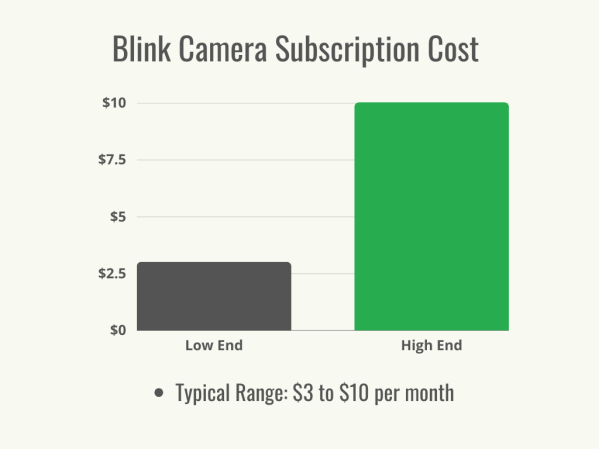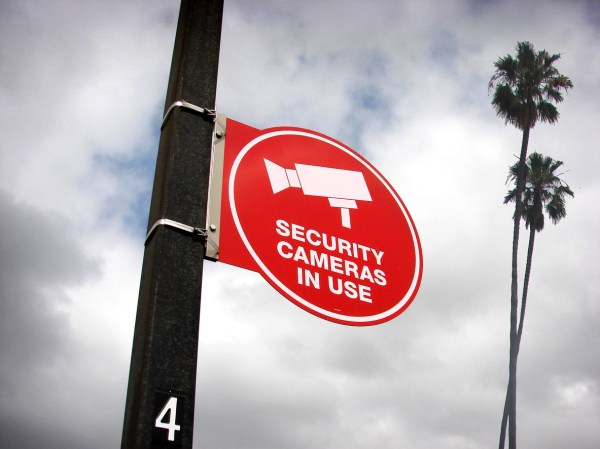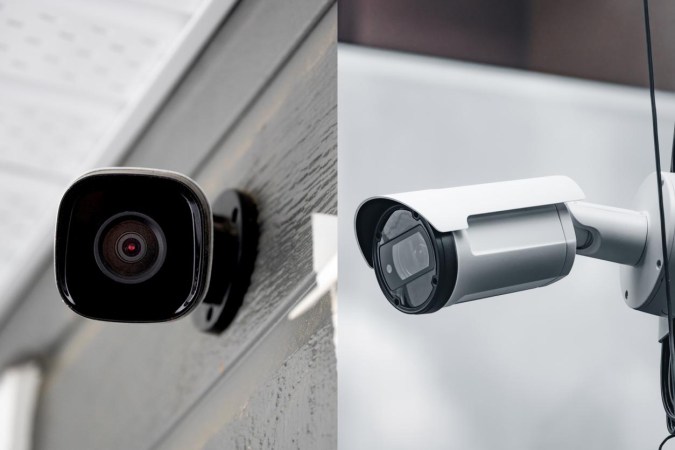We may earn revenue from the products available on this page and participate in affiliate programs. Learn More ›
Highlights
- The typical cost range for a home security system is $280 to $1,150, with customers across the country paying an average of $700.
- The main factors that affect the total cost of a home security system include the type of system, the cost of installation, the type of equipment and monitoring plan chosen, any applicable activation fees, and the cost of maintenance.
- Investing in a home security system comes with numerous benefits, including family and property protection, increased home value, remote access and monitoring, and decreased home insurance costs.
- Some home security systems are designed for DIY installation, while others require professional installation. However, customers who choose a DIY system may still prefer to hire a pro to install their system.
For most people, their home is their sanctuary. Unfortunately, according to the FBI’s Crime in the United States report, there were more than 1.1 million burglaries in 2019 (the most recent year for which data are available), with an estimated $3 billion in total property loss, or an average of $2,661 per burglary. Although the FBI reports that property crimes have decreased 48.5 percent since 2010, many homeowners and renters still don’t want to take the risk of becoming a victim of home invasion.
Luckily, there are several steps that residents can take to protect their homes, like installing a security system. How much does a home security system cost? According to Angi, home security costs between $280 and $1,150, or $700 on average. These costs can vary depending on the type of equipment and level of monitoring a customer chooses. The contracts for home security systems can be filled with small print and hidden fees, so it’s important for customers to know what to look for in a home security camera system before signing a contract or making a purchase.
Whichever level of protection a customer chooses, experts agree: the best home security systems, like Vivint or ADT, are worth the investment.
Factors in Calculating Home Security Cost
Whether a customer is trying to choose between SimpliSafe vs. Ring or ADT vs. Brinks, determining the cost of a home security system can be more complex than it would seem. There are several factors that will be a part of all installations, and others where cost will be determined by a customer’s choices, making it easier to control the budget a bit more.
System Type
There are several types of home security systems customers can choose from, and the type they choose can impact the total home security system prices. Customers will need to choose between wired and wireless cameras, and between monitored and unmonitored systems.
- A wireless home security system is typically easy to install since it doesn’t require drilling into walls to run cables. These systems can be controlled using a smart device, making them ideal for customers who want to be able to monitor their home remotely. A wireless home security system costs between $200 and $2,000.
- A wired home security system will require professional installation since wires will need to be run and installation involves working with electricity. However, wired systems can be harder for hackers to break into, which could provide additional peace of mind. A wired home security system costs between $800 and $1,600.
- A monitored home security system comes with a monthly monitoring fee customers will need to fit into their budget. However, in exchange they’ll receive 24/7 professional monitoring, which can provide additional peace of mind.
- An unmonitored home security system will have a lower cost month to month since there’s no monitoring fee to pay. Customers will need to be more diligent about monitoring their own cameras, though, and some may find this to be cumbersome.
Installation
On average, security camera installation costs between $120 to $600 for installation, depending on the size and complexity of the system and the layout of the home. More wiring and additional units will increase the cost of the installation, especially if it’s necessary to cut into walls and ceilings. For this reason, hardwired systems usually cost a bit more at installation than wireless systems.
Some home security companies send the consumer a package with materials and instructions to install the equipment themselves, which saves on security system installation costs. Additionally, customers who know how to install security cameras can tackle this project themselves (if the security provider allows DIY installation) to save money.
Equipment
A basic home security package will typically include a central control panel, sensors for windows and doors, motion detectors, a siren, and often a remote keychain fob to activate or deactivate the system when the customer is not at the panel. A basic equipment package can cost between $200 and $400, and opting for additional equipment will increase the equipment price.
Add-ons such as glass-break sensors, smoke and carbon monoxide detectors, and various types of security cameras can add small or significant cost depending on what a customer chooses. It’s important for customers to see what their contract covers and ask that additional equipment be itemized so they know what they’re getting.
Monitoring Plan Level
Some security systems can be monitored by the customer, while others require professional monitoring (and some offer a choice between the two). Monitoring plans come in a variety of levels:
- Self-monitoring systems essentially allow the user to connect to the system with a smartphone and store video from monitoring cameras in a cloud system for a short length of time.
- Basic professional monitoring includes 24/7 monitoring and notification of local authorities in the event of an alert.
- Comprehensive professional monitoring may include observation of smoke and carbon monoxide detectors, fire alarms, and water-leak sensors; some plans also monitor for medical emergencies. These features will add to the monthly cost.
- Higher-level plans may include live video monitoring and home automation capability, which will raise the monthly charges significantly.
Maintenance
Maintenance costs on a home security system shouldn’t be a major cost for the most part. Customers will need to replace the batteries in the fobs and backups in the panels from time to time. While hardwired systems require less maintenance overall, wireless systems will require a bit more of a maintenance time commitment, as the user may occasionally need to update the software that supports the system.
The only significant charges for maintenance can come if the system breaks down or is damaged and requires a service visit. Some companies include service calls in their contracts, while others will cover the visits for a period of 1 to 2 years and then charge for them after that warranty period. Customers can check their contract for specifics on this policy before they sign.
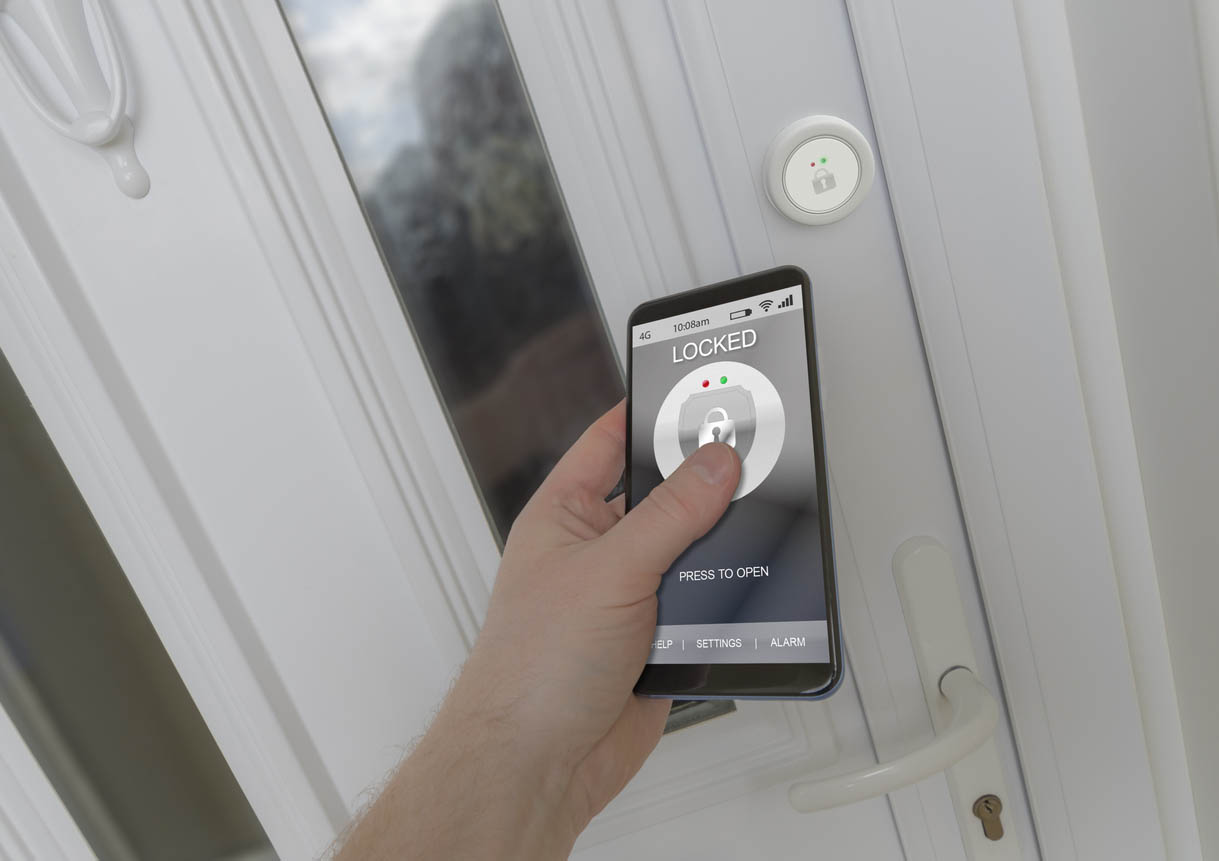
Additional Costs and Considerations
Once the security system is installed, there are still several additional costs for customers to incorporate into their budget. From patching up the walls to adding features that enhance the effectiveness and convenience of the system, the following are additional options beyond the basic installation to consider.
Smart-Home Automation
If a customer has been considering adding smart features to their home but has been overwhelmed by the prospect of figuring it out themselves, a home security system installation might be the ideal time to think about it. Smart devices can enable the customer to turn lights on and off and lock or unlock doors with a smartphone app, adjust the thermostats, and coordinate with digital home assistants.
These systems can also be set up to notify customers through their phone in case of a smoke or carbon monoxide alarm or water leak. The security company handles the setup—all the customer needs to do is log on. Adding smart-home features à la carte to an existing plan can add between $15 and $500 apiece to the monthly fee, depending on complexity and the base package.
| Smart Equipment Type | Average Cost (Equipment Only) |
| Smart lighting | $15 to $90 |
| Smart locks | $150 |
| Smart smoke, fire, and carbon monoxide alarms | $35 to $100 |
| Smart thermostats | $130 to $500 |
Drywall Repair
A factor that sometimes goes overlooked when a customer wonders “how much is home security?” is whether installation will require opening up or drilling into drywall. Cutting into the walls to conceal the wires and junction boxes that are required for a wired system will inevitably mean some repair is necessary. Drywall repairs can cost between $75 and $350, and the customer will need to prime and paint the repair to match the existing decor as well.
Additional Equipment
Adding on to the basic security package will add to the overall cost. Motion sensors can add $20 to $200 apiece depending on the location and type of sensor. Adding door and window alarm sensors beyond those included in the base package can result in an additional $25 to $300 charge. Many residents like the idea of a panic button they can use to summon help in a medical emergency, which can add $30. Finally, some customers want to add glass-break sensors that will sound an alarm at the sound of a window or sliding glass door being smashed—an addition of $100 to $200, depending on the number and type of sensors.
| Equipment Type | Average Cost (Equipment Only) |
| Door and window alarm sensors | $25 to $300 |
| Glass-break sensors | $100 to $200 |
| Motion sensors | $20 to $200 |
| Panic button | $30 |
Permits
Weary of constantly responding to false alarms, many communities now require a permit and fee before a customer installs a home security system. The permit, which can cost $25 to $100, gives the local government the right to inspect the installation of the system and be certain it meets certain criteria, and it will usually mean that in the event of a false alarm a customer won’t be charged. Without a permit in an area that requires one, a customer can be assessed a hefty fine for false alarms that require the police or fire department to respond.
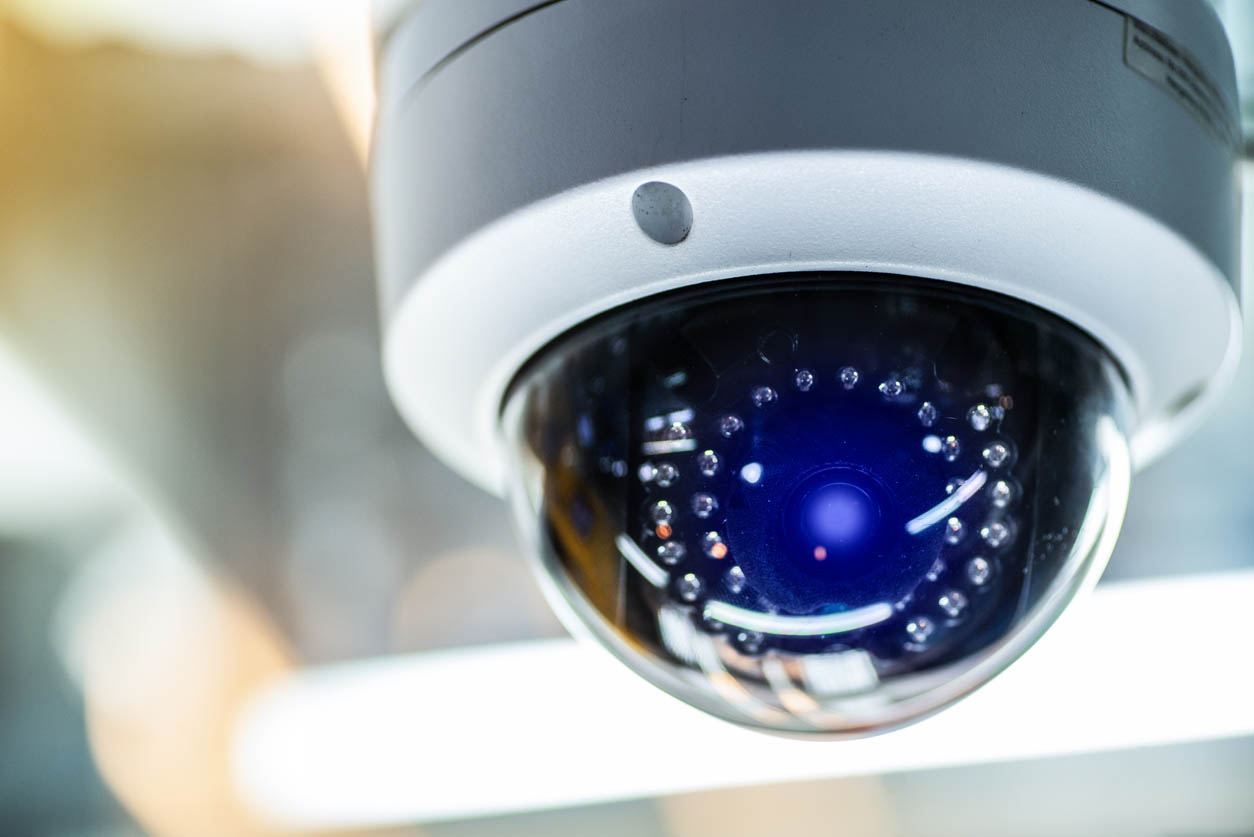
Home Security Cost per Month for Popular Providers
There are hundreds of home security professionals spread across the country. In some markets, using a local company may result in a better deal, but there’s a certain comfort in hiring a large company that has a smooth and efficient setup already in place with years of experience. To offer a general idea of how much costs can vary among the larger providers, both for professionally installed and monitored and DIY security systems, customers will want to compare the services and costs of some of the most familiar.
| Home Security Provider | Equipment Cost | Monitoring Cost |
| SimpliSafe | $249.96 to $709.90 | $0.33 to $0.99 per day |
| Vivint | $599 to $2,479.92 | $39.99 to $61.40 per month |
| Deep Sentinel | $499 and up | $100 and up per month |
| Frontpoint | $421.93 to $775.89 | $49 per month |
| Xfinity | $360 to $600 | $10 to $40 per month |
| Eufy | $99.99 and up | $0 to $9.99 per month |
| Scout | $229 to $319 | $9.99 to $19.99 per month |
| Ring | $199.99 to $379.99 | $3.99 to $20 per month |
| Canary | $99 to $199 | $9.99 per month |
| Cove | $100 and up | $17.99 to $27.99 per month |
| ADT | $194.98 to $1,158 | $24.99 to $61.99 per month |
| Abode | $139.99 to $379.99 | $6.99 to $22.99 per month |
| Brinks | Not specified | Not specified |
| Link Interactive | Not specified | $30.99 to $47.99 per month |
SimpliSafe Monthly Cost
SimpliSafe systems start at $249.96 and can go higher, depending on the package. How does SimpliSafe work? Customers can choose between professional monitoring and self-monitoring. The monthly monitoring fees are lower than those of many companies, starting at $0.33 per day for a self-monitoring plan with unlimited camera recording, or $0.99 per day for a plan with smart integration and professional monitoring. SimpliSafe does not have contract length requirements and therefore no termination fees. Homeowners can expect to install the equipment themselves, though professional installation is available for an additional cost.
Vivint Pricing
Vivint offers full-spectrum protection, including vehicle and garage-door coverage along with full automation and compatibility with third-party equipment. How much does a Vivint alarm system cost? Vivint pricing for equipment is higher than what some companies charge; for example, when comparing Vivint vs. Ring, customers will find that Vivint is more expensive, and the starting price for installation is $199. Vivint home security costs start at $599 for the Vivint Starter Kit, but the company offers financing plan options through three different providers with no required up-front charge. Monthly monitoring fees begin at $39.99, and there is no contract term lock. The installation is professionally done, including setup and compatibility checks with the home Wi-Fi and any third-party systems already in place.
Deep Sentinel Cost
Deep Sentinel takes a different approach to home security: Users purchase a kit that includes a hub, mounting hardware, a yard sign, and self-installed cameras, then download an app. The cameras will notify the app when someone approaches the home or door—but they will also notify live attendants standing by in the Deep Sentinel call center. Two-way voice transmission allows the guard monitoring the system to interact with suspicious persons, telling potential thieves that they are on video and that the police are on the way, and allowing the guards to provide information that proves they can see the person. Kits are available with one to six wireless home security cameras. The MSRP for this equipment starts at $499, with an additional $200 for each extra camera and a $200 refundable deposit to reserve the kit. Monitoring is a comparably steep $100 per month for a one-camera kit, with an additional $50 for each extra camera. The monitoring charges are higher than those of other companies, but the higher rate covers the personal attention to the cameras provided by human monitors or “guards” instead of AI, along with their guarantee of a 30-second response to attempted robbery or burglary of home or car, violent behavior, package theft, and suspicious behavior, and a response within 60 seconds to people standing at doors, customer requests to test the system or to confirm package delivery, or police or people on the property who are nonthreatening.
Frontpoint Security Cost
Offering three different packages ranging from $421.93 to $775.89 as well as build-your-own systems, Frontpoint offers a wide range of DIY-installed equipment and nearly limitless à la carte add-ons that are priced individually to allow users to build a fully custom system. Monthly monitoring fees are $49 for 24-hour protection including police, fire, and medical; live video streaming and home automation; and the ability to watch for deliveries.
Xfinity Home Security Cost
Xfinity offers its Pro Protection and Pro Protection Plus plans for $30 and $40 per month, respectively. The company also offers a Self Protection option starting at $10 per month. Equipment packages include the Base Home System for $360, the Complete Home System for $480, or the Ultimate Home System for $600. Each comes with the option to pay up front, or customers can choose 2-year interest-free financing. There is no contract, unless the customer is adding the plan to an existing Xfinity subscription, in which case the costs will be discounted by bundling the home security system with the customer’s phone, cable, and internet. The equipment is compatible with many popular smart- home devices and is proprietary and difficult to hack. It can be integrated with multiple digital home assistant systems for true home automation.
Eufy Security Camera Cost
Eufy customers typically build their own equipment packages, depending on their security needs. Devices connect to the HomeBase, which starts at $99.99, and cameras start at $42.99 for indoor models and $79.99 for outdoor models. Customers also have the option to choose a five-piece alarm kit for $159.99.
Designed to be a fully self-monitoring system, Eufy is a self-installed set of equipment with no monthly fees. Users purchase the cameras and sensors they need from Eufy’s online store, download a free app, and connect the devices to the app for complete control over the system. If they choose, customers can opt for professional monitoring services for $9.99 per month. The system has multiple options and gives users the freedom to decide if they prefer a fully developed self-monitoring system or a professionally monitored system and the ability to switch back and forth as they choose.
Scout Alarm Monthly Cost
Scout is a fully wireless, customizable alarm system that allows DIY installation. Customers choose a hub that plugs into a router. The Scout Hub costs $120 with no long-term contract and includes smart-home integration, self-monitoring or an optional 24/7 police dispatch system, 4G cellular backup and battery backup, and a 105-decibel siren to deter intruders. Sensors are purchased separately and are priced by item, including door and window sensors, access sensors, glass-break sensors, water sensors, and smoke and carbon monoxide sensors, as well as cameras and locks, and range from $5 to $250 each. Customers can also opt for equipment packages that cost between $229 and $319. The self-monitoring plan, Always On, costs $9.99 per month, while the Always On Plus plan provides 24/7 professional monitoring for $19.99 per month.
Ring Security System Cost
How does Ring work? A Ring system can be as DIY as a customer chooses. Ring starts at $199 for a package of DIY-installation equipment and tops out at $379.99 for a 14-piece Alarm Pro security kit. Customers can start with an equipment bundle or purchase individual pieces as needed. For reference, a Ring doorbell costs an average of $99.99. Professional installation is available for an additional fee, and financing for equipment can be spread over 3, 6, or 12 months. Ring alarm system monthly costs depend on what level of monitoring a customer chooses. Ring subscription costs start at $3.99 for self-monitoring, while professional monitoring costs between $10 and $20 per month. Customers can save on monitoring by paying annually rather than monthly.
Canary Security Monthly Cost
Canary is a camera-based system with three different camera monitoring options: the View ($99), the Flex ($199), and the Pro ($169). All feature HD quality and night vision, while the Pro adds a built-in siren and monitoring of the area around the camera. The View and Pro are indoor cameras, while Flex can be used indoors or outdoors. The company’s single cloud monitoring service costs $9.99 per month or $99 for the year. This provides 30 days of video history, two-way conversation with the monitor, video downloads, an alarm button, and more. The free Basic plan is a leaner package without unlimited downloads or custom modes, and only 1 day of video history. The system is installed by the customer, but 24-hour phone support is provided to assist. The Canary system integrates with digital home-assistant platforms like Apple TV, Alexa, and Google Home for a smart-home experience and voice commands.
Cove Security Cost
Instead of selling customers on base packages and piecemeal additions, Cove takes a different approach. The customer will complete a short questionnaire about their residence and needs before being directed to a unique page with recommended products, individual prices, and explanations of what’s necessary and what’s optional. The equipment costs start with the touch- screen panel at $100 then build from there, depending on what the customer chooses. Monthly fees begin at $17.99 and range up to $27.99 per month, depending on how long a customer would like video monitoring stored and whether they want the system integrated with digital home assistants. The equipment is often discounted, so customers will want to check periodically for sales.
ADT Home Security Cost
ADT has two options when it comes to home security systems. Traditional ADT packages are professionally installed, while Self Setup packages are meant for DIY installation. Equipment costs range from $194.98 for a Self Setup Build Your Own system (which includes a hub, an entry sensor, and access to the ADT+ app) to $1,158 for the Video & Smart Home system. The monthly ADT cost will depend on the equipment package chosen; monitoring starts at $24.99 per month and maxes out at $61.99 per month. Many customization options allow customers to build exactly the package they want.
Abode Home Security Cost
How much is a home security system from Abode? Abode provides four starter kits: the Security Kit for $139.99 (which includes a security hub, mini door or window sensor, and key fob), the Smart Security Kit for $329.99 (which adds a Smart Security Hub and a window sticker), and the iota All-In-One Security Kit for $379.99 (which includes an iota Hub, mini door or window sensor, and key fob). Equipment can be added to these base packages as needed. A recommended wireless keypad adds $99 to the equipment cost. Monitoring costs $6.99 per month for the Standard Plan with video storage and live video, or $22.99 per month for a Pro Plan with 24/7 professional monitoring and cell backup. Customers can also opt for an unmonitored system for no monthly cost.
Brinks Home Security Monthly Cost
Brinks Home offers customers a choice: have the equipment professionally installed for a fee, or the company will send a box of equipment with instructions for customers to install it themselves. Brinks offers a base wireless system and then a monthly fee to monitor, and costs are higher for some upgraded services. Brinks home security costs are customized to the home, so customers will need to call and speak with a representative who will help determine the best system for their home and needs. This is based on a 3-year contract for services, and customers may incur a cancellation fee for exiting early.
Link Interactive Cost
Link Interactive has a variety of equipment options, including entry sensors, motion sensors, glass-break sensors, cameras, and home automation devices. The cost for this equipment varies on the types of devices the customer chooses. Standard, Gold, and Elite monitoring plans simplify Link’s offerings. All three plans provide professional monitoring on a cellular system; two-way voice to monitor keypads for immediate response in an emergency; and smoke, fire, and CO detectors. The Gold plan adds home automation, and the Elite plan includes HD video monitoring and analytics. The plans price out at $30.99 per month for the Standard, $39.99 per month for the Gold, and $47.99 for the Elite. Contracts can be spread over 12, 24, or 36 months. If a customer prefers to pay for their equipment up front, there is no contract lock; if they use financing, however, they’ll be under contract until they have paid in full.
Benefits of a Home Security System
Home alarm systems can provide peace of mind—knowing that someone is available who can get assistance to a customer’s home more quickly than they can themselves goes a long way toward helping them feel secure at home. Even in low-crime areas, the extra layer of security can feel good. There are other concrete reasons to consider installing a security system, both personal and financial.
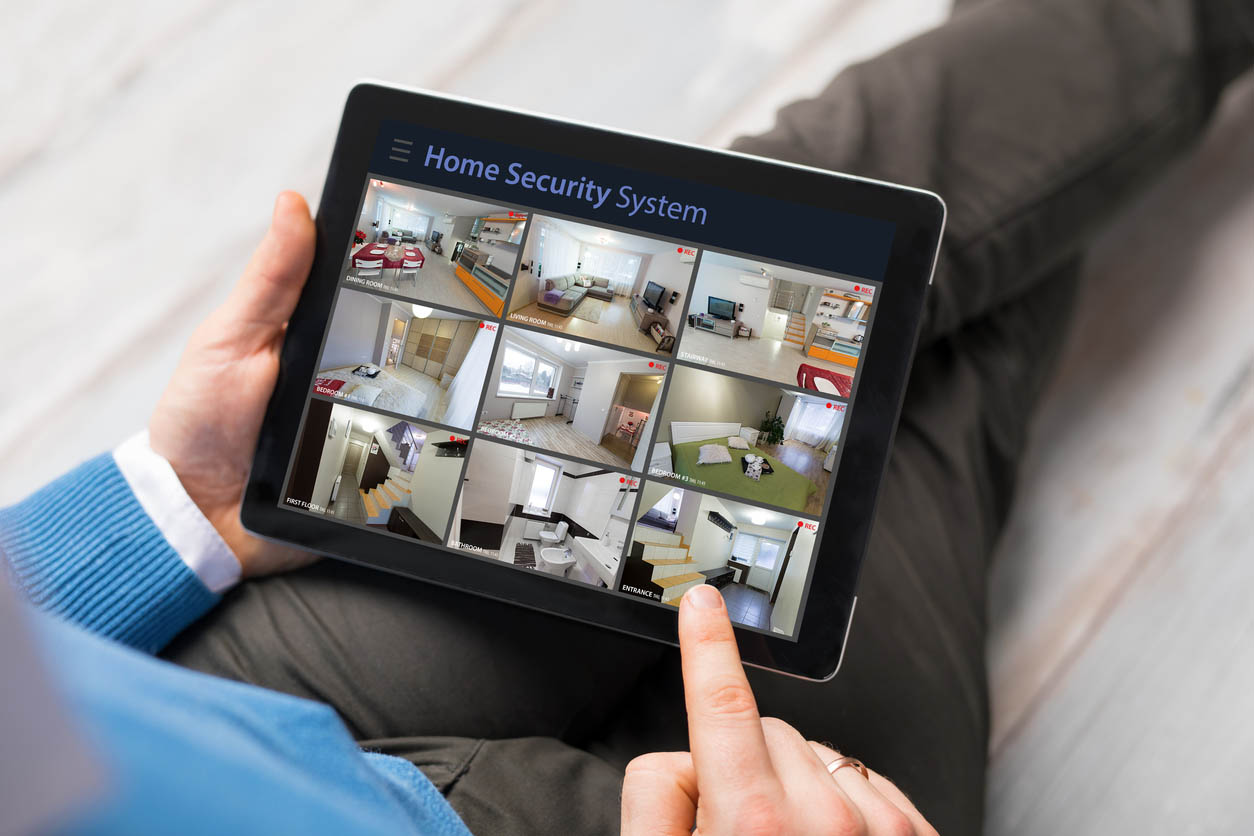
Family Protection
Far more important than any possessions, the safety and security of the family living inside a home warrants the best protection possible. A home security system can help monitor elderly family members who live alone for prompt response to medical emergencies, or allow parents to leave older children home alone without worrying that they’ll forget to lock the door. The consistent monitoring means customers won’t have to worry about waking to a fully involved fire or home invasion with no warning.
Property Protection
Burglars want a quick, easy run in and out of a home with enough time to grab valuables, cash, and electronics. Alarm systems provide signage to let criminals know that the residence isn’t an unprotected target, which may deter them. And if they do choose to break in, the alarm gives an audible reason for the intruder to leave as quickly as possible, protecting the property that the customer has worked hard to make their own. If a criminal is caught on camera, the footage may just be the piece of evidence that allows the resident to identify a suspect.
Increased Home Value
Many home buyers who are about to spend their life’s savings on a new home will see the existence of a modern security system as an added bonus, knowing they won’t have to scrape up the extra money to install one to protect their new investment, and they may pay more for a home that is already protected. In the event that a buyer doesn’t want to use the system, it can be deactivated after the sale and the buyer will have the option of reactivating it if they choose. For homeowners in the process of selling, DIY systems with a peel-and-stick installation method make it possible to gently remove equipment from the wall and skip patching the drywall.
Remote Access and Monitoring
Ever set out on a road trip and started to wonder whether the garage door is closed? Did the front door get locked one last time? What if the coffee pot was left on and there’s a fire? Remote access to a security system via a smartphone app or program can prevent customers from worrying while on vacation or having to make embarrassing phone calls to neighbors to ask them to check. Remote access to cameras on the system can also let customers know when packages have arrived on their doorstep. For residents who travel frequently, just keeping an eye on their home from afar—and knowing that the system is as well—can make travel less stressful, and it might even let them turn the lights on before they return to their secure home.
Lower Home Insurance Costs
Homeowners and renters insurance companies don’t want to pay out for a forced-entry burglary. If a home is broken into, the insurer may need to cover the costs of lost valuables, door and window replacement, interior damage, and potentially cleanup costs. Security systems have proven to be a very effective deterrent to burglars, so homeowners with security systems in place are less likely to be the victims of home invasion. The less likely policyholders are to be robbed, the less likely they are to submit an insurance claim. Therefore, insurance providers offer a home insurance discount for having a security system, often ramping up the savings for more elaborate security plans. Homeowners may save as much as 20 percent on their premiums. For many homeowners who are on the fence about whether or not the average cost of a home security system is worth it, this is a deciding factor.
Home Security System Installation: DIY vs. Hiring a Professional
With the advent of commercially available security doorbells and cameras, it’s reasonable for customers to question whether they really need a professionally installed home security system. DIY systems have a lot of benefits—they’re customizable, easy to install, and usually come with instructions or contact information for support if a customer gets stuck. Customers can perform the installation on their own time rather than coordinating with a technician, and if they move frequently, they can take it down and reinstall it themselves, too. DIY systems are often the best security systems for apartments because they don’t require drilling into a wall. Nowadays, most DIY systems come with a professional monitoring option so customers don’t have to worry about missing an alert in the event of an emergency.
However, there are also benefits to having a professional install the system. Many security systems that only offer professional installation do so because they help customers create a system that is unique to their home and needs. Technicians can identify parts of the home that may need additional protection and confirm that each piece of equipment is working properly. If a customer has physical limitations that make it difficult to climb a ladder to place sensors and cameras, professional installation could be the solution. It’s worth a call to get estimates for installation from several providers. Customers may find that the financial outlay isn’t as much as they thought it might be and that the peace of mind is worth the expense.
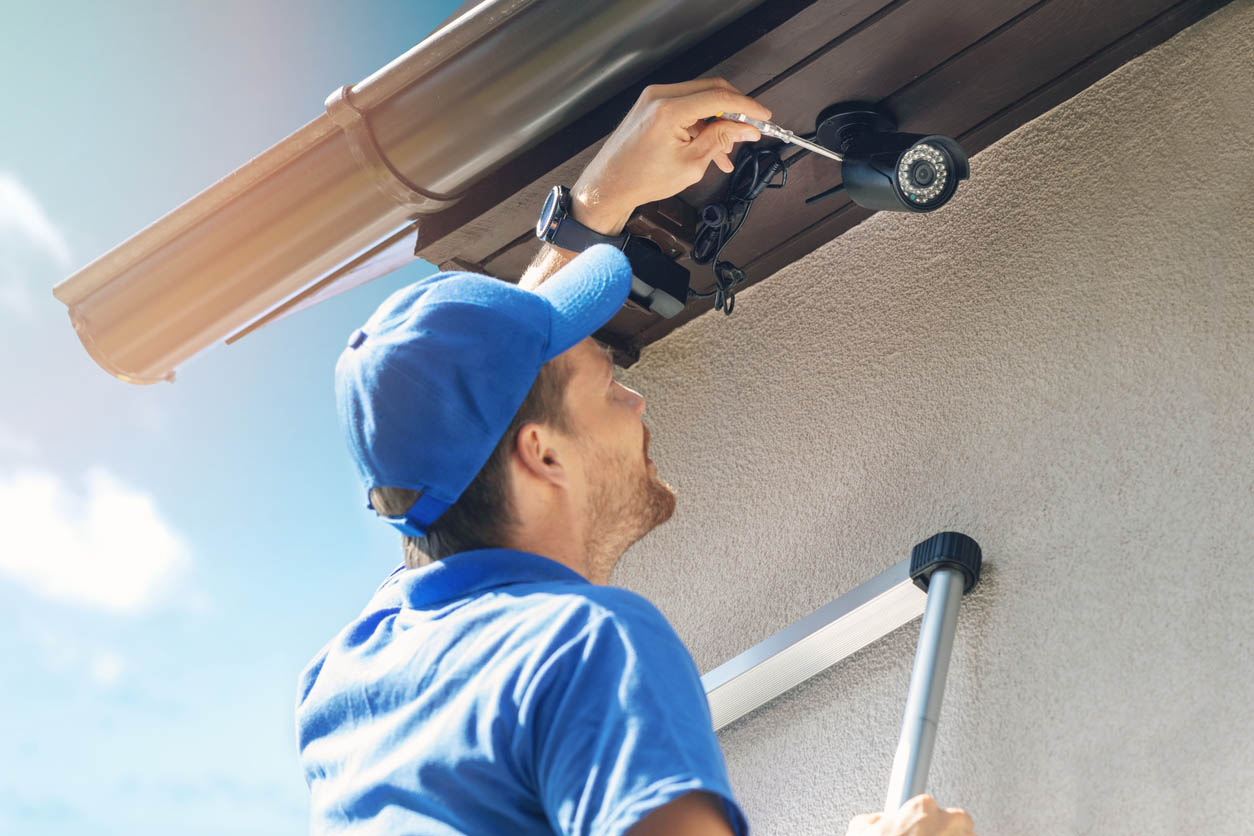
How to Save Money on Home Security Cost
Investing in a home security system isn’t a low-cost proposition, but the benefits often outweigh the costs. That said, there are a number of ways to reduce the total expense of the installation and monitoring.
- Opt for less. Consider placing monitors only on doors and windows that are likely to be accessed; less equipment means lower cost. If all of your second-floor windows would require a tall ladder to reach, it’s not unreasonable to skip placing sensors there.
- Don’t skip monitoring. It’s generally advised to add monitoring to your package. While it may seem like a good idea to skip it to save money, a monitored service can respond more quickly and effectively to any threats and will cost much less in the long run than the price of recovering after a fire or break-in.
- Check for notifications. If monitoring is absolutely outside your budget, make sure the system you’ve chosen has ample notification systems so that you can stay on top of what’s going on at home wherever you are.
- Only buy what you need. Before choosing a system, make sure you know how many security cameras you need for your home and opt for a package that includes that number and no more.
- Buy refurbished. Check to see if your security system provider of choice offers refurbished equipment at a discounted price.
- Look into insurance discounts. Consult your homeowners insurance policy to find out whether any discounts are offered for having a security system.
- Place security signs. It’s been proven that having security signs deters crime. Choose yard signs and stickers as low-cost add-ons to your security system package.
- Stick to the basics. Choose a system that allows for lots of customization so you only pay for what you need. For example, a Blink camera subscription costs only $10 or even less per month, but a wide variety of plans allows customers to choose exactly how much coverage they want to pay for.
Questions to Ask About Home Security
Just like they would when hiring any professional, customers will want to carefully vet home security companies before choosing the one best suited to their needs, and it’s a good idea for customers to seek more than one consultation before choosing. In order to feel secure, the customer is offering this company quite a lot of information and access to personal space, so it’s extra important that they feel comfortable with the company, its policies, and its employees by asking some questions.
- Do you belong to a recognized security association?
- How long have you been in business? Are you licensed?
- I’m giving you access to monitor my home. What measures have you taken to protect my safety from bad actors within your company?
- What is your response time?
- What kind of warranty do you provide for equipment and service lapses?
- If I move and need to transfer service, is there a fee involved?
- What kind of early termination fees do you charge? Are there exemptions to the fees, such as sale of the property?
FAQs
With so many options flooding the market and so many decisions to make, choosing a home security system can seem like an insurmountable pile of options. The following are some answers to the most common home security questions to help customers decide which option is best for their needs.
Q. What does a home security system do?
Home security systems can be basic alarms that set off a siren if someone opens or breaks a door or window, or they can be a sophisticated system integrated into a home that provides control over lights, locks, and temperature and calls the correct authorities on a customer’s behalf in any emergency. Most people choose something in between these two extremes. A home security system’s job is to deter criminals, notify customers or the authorities should a break-in occur, and monitor for other activity, including disasters and medical emergencies. The goal is to protect the customer and their family from threats and offer peace of mind.
Q. Do all security cameras recognize faces?
No. In fact, almost none of them do without extensive training, and most currently available models aren’t equipped to do that. With some very high-tier packages, a customer may receive a camera that they can “introduce” to their relatives and the home’s residents, so instead of getting an alert that someone tried to break in through the back door, the customer will be alerted that a family member got frustrated that their key wouldn’t work and angrily shook the door handle. For the most part, though, this technology just hasn’t caught up yet to the home security industry in a way that is useful and affordable to install.
Q. What is the annual maintenance fee for home security?
Most packages do not include a maintenance fee. Rather, the companies will build basic maintenance into their premiums, which is why it’s important for customers to check their contract and see what’s included. Basic maintenance will include replacing batteries in sensors from time to time (a DIY job, costing around $10 per year) and occasional software upgrades for wireless systems. In the event that a system fails or is damaged, the customer’s contract will tell them what the period is during which repairs are free and, after that time has passed, how much a service call will cost. If this information is not in their contract, customers will want to ask for it to be included before signing.

